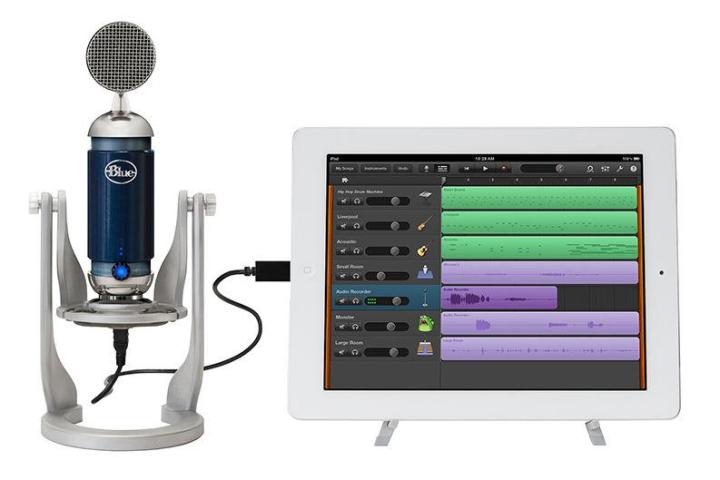
Check out our full Blue Microphones Spark Digital review.
When you’ve got a product as innovative and ubiquitous as Apple’s iPad, you don’t have to add new adaptations to incorporate accessories – the accessories will come to you. Such is the case with a new microphone from the recording specialists at Blue, the Lightning-equipped Spark Digital studio condenser microphone.
There was a time when condenser microphones required specialized drivers to work with your recording software, as well as a power source from a mixing board or preamplifier to even function. That’s because a condenser mic’s capsule or diaphragm, the point at which sound enters the device, is much more complicated than what’s inside the average stage microphone, requiring a power source for its inner workings to allow for a more sensitive and accurate response to vocals and instruments alike.
But that was then, and this is now. With the plug-and-play Spark Digital, you can simply connect into the Lightning port of your iPad and pull up your favorite digital recording software to immediately start laying down tracks, with no need for drivers or additional hardware. And if you want to transfer your session to a more traditional recording setup, the Spark Digital claims to be the first mic of its kind to also offer USB connectivity, allowing users to easily connect to both PC and Mac workstations as well.
Inside the Spark Digital are the same guts as Blue’s original Spark condenser mic, including the same condenser capsule and electronic components, only in a more mobile format. The mic also provides a simplified way to switch polar patterns called Focus Control, allowing users to expand or contract the recording sensitivity to move from intimate sessions, to larger room recordings.
Other on board features include a built-in headphone jack for zero-latency monitoring, as well as volume, gain, and instant mute, allowing you to control all your basic recording parameters right from the mic itself. Also included is an adjustable desk stand with a built in shock mount for easy setup in a variety of locations.
While the Spark Digital may not have the chops to be the fixture of a top-shelf home recording studio, it certainly offers a myriad of options and intuitive functions, which could make it the perfect tool for the beginner recording enthusiast, or even more experienced users who want a quick and easy way to make guerilla-style recordings on the go.
We haven’t had the chance to test out the Spark Digital for ourselves yet, but we plan on getting one in our hands soon for review, so stay tuned for our final verdict. If you can’t wait that long, you can pick one up for yourself today at Blue’s website for $200.


